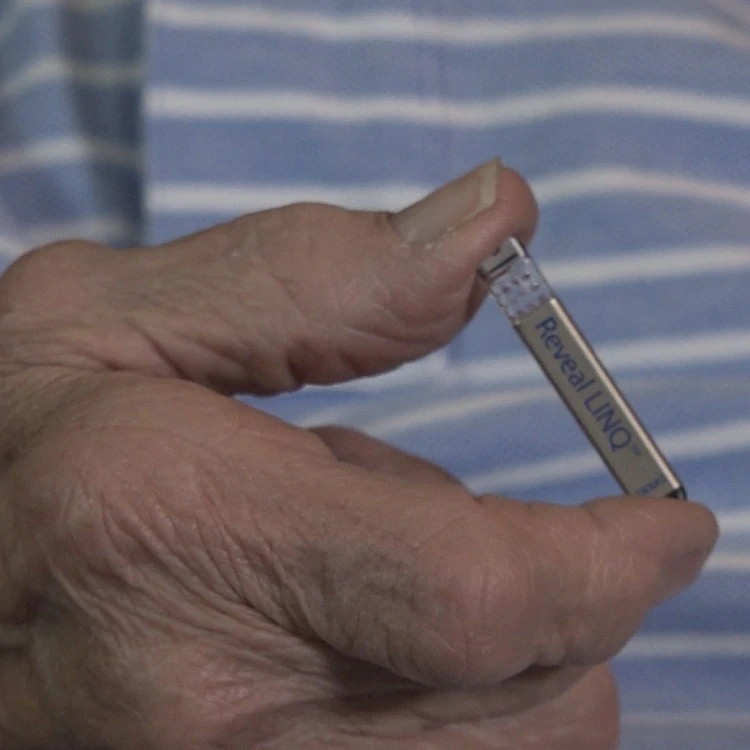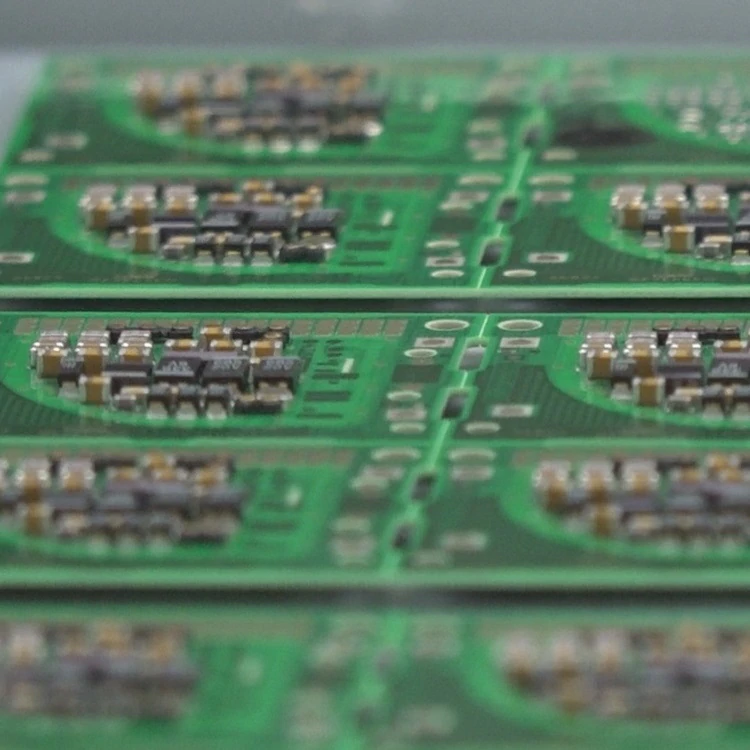Stories archive
Stories published to our news archive may contain outdated information or links that are no longer active. Please note we do not update stories once they have been moved to the archive. Access and use the information in the stories at your own discretion. If you have questions or would like updated information on a story covered here, please contact Medtronic Public Relations at riley.mclaughlin@medtronic.com.
Thinking Big by Thinking Really Small
Sometimes thinking big, means thinking really, really small. Nearly a decade ago, Medtronic set out to revolutionize medical devices, to shrink them, by up to 90 percent. “We didn’t want to...
Sometimes thinking big, means thinking really, really small.
Nearly a decade ago, Medtronic set out to revolutionize medical devices, to shrink them, by up to 90 percent.
“We didn’t want to make them small for “small’s sake,” but to make them smaller and less invasive while providing the same or better therapy for patients,” said Paul Gerrish, director of technology at the Medtronic facility in Tempe, Arizona, where much of the miniaturization work took place.
“People were saying that we were defying the laws of physics,” recalled Mark Phelps, senior program director and a key leader of the miniaturization team. “They said it wasn’t possible.”
But these fears proved wrong.
Using the same technology that compressed computing into the palm of your hand, micro-electronics experts in Arizona, along with designers, engineers and medical experts in Minnesota and elsewhere, found they could reinvent medical devices, using just a fraction of the space.
“We did. We succeeded,” Gerrish said. “The real key was how much power the electronics used and what size battery we needed.”
Thanks to micro-electronics, ultra-low-power medical devices now use less energy when turned on than smartphones do when turned off, allowing them to be much smaller in size.
“These devices are maintaining the level of performance that we have on our larger systems,” said Charles Gordon, senior design manager. “And in some ways there’s even more intelligence in them in certain aspects.”
The first of those high performing devices are beginning to reach patients.
After surviving a stroke, Bill Thompson now wears a tiny implanted heart monitor called Reveal LINQ™ Insertable Cardiac Monitor (ICM).
Bill needed a monitor to help determine whether heart problems caused his stroke. Traditional external technology could only monitor his heart for a few days or weeks, and the existing implantable heart monitors were significantly larger than the LINQ device. But at just one-third the size of
“I think this is a major step forward,” said Dr. Gary Boliek,
Medtronic also has developed a new type of pacemaker the size of a large vitamin. At less than one-tenth the size of a traditional pacemaker, it is implanted directly into the heart and does not require the use of wires ("leads") to deliver pacing therapy, thereby reducing potential sources of complications seen with conventional pacing systems. Learn more about Micra.
“By making things small enough, what we’re able to do is dramatically change the procedure of how these devices are used, to make them much less invasive which is better for the patient,” said Chris Zillmer, vice president of Research and Technology.
Medtronic scientists and engineers envision a day when even smaller implanted devices, too small to be built by human hands, could help patients stay healthy by monitoring their internal activity for warning signs of new problems.
“So it’s the first time you can have truly personalized medicine,” Phelps said. “They’ve been talking about that for decades, but we haven’t had the tools to get this real time feedback.”
That could also mean smartphone displays of that real time data, to help patients constantly stay on top of their health.
Medtronic engineers believe it is still possible to make devices much smaller, perhaps up to ten times smaller than the miniaturized devices are today. After all, they’ve done it before.
“It’s an exciting time,” Gerrish said. “It’s an exciting time to be an engineer and you see the progress of technology. The opportunity to make a positive impact on human health has never been greater.”
Because it turns out thinking small, can lead to something really, really big.
LEARN MORE
Read the Medtronic Perspective on Transforming Healthcare:
Transforming Medtronic to Support Progress in Healthcare (PDF) IMPORTANT SAFETY INFORMATION
REVEAL LINQ™ Insertable Cardiac Monitor
Possible risks associated with the implant of the Reveal LINQ insertable cardiac monitor include, but are not limited to:
- infection at the surgical site
- device migration
- erosion of the device through the skin and/or sensitivity to the device material
Treatment with a Reveal LINQ Insertable Cardiac Monitor is prescribed by your physician. This treatment is not for everyone. Please talk to your doctor to see if it is right for you. Your physician should discuss all potential benefits and risks with you. Although many patients benefit from the use of this treatment, results may vary. For further information, please call the Medtronic toll-free number at 1-800-551-5544 (7:00 a.m. to 6:00 p.m., Monday-Friday, Central Time) or see the Medtronic website at www.medtronic.com.
Important Safety Information: Micra Transcatheter Pacing System VVIR Single Chamber with SureScantm MRI
Indications
Micra Model MC1VR01 is indicated for patients with:
- symptomatic paroxysmal or permanent high grade AV block in the presence of AF,
- symptomatic paroxysmal or permanent high grade AV block in the absence of AF, as an alternative to dual chamber pacing when atrial lead placement is considered difficult, high risk, or not deemed necessary for effective therapy,
- symptomatic bradycardia-tachycardia syndrome or sinus node dysfunction (sinus bradycardia/sinus pauses), as an alternative to atrial or dual chamber pacing when atrial lead placement is considered difficult, high risk, or not deemed necessary for effective therapy.
- Rate-responsive pacing is indicated to provide increased heart rate appropriate to increasing levels of activity.
Contraindications
Micra model MC1VR01 is contraindicated for patients who have the following types of medical devices implanted: an implanted device that would interfere with the implant of the Micra device in the judgment of the implanting physician, an implanted inferior vena cava filter, a mechanical tricuspid valve, or an implanted cardiac device providing active cardiac therapy that may interfere with the sensing performance of the Micra device.
The use of deactivated Micra devices in situ and an active Micra device, or an active transvenous pacemaker or defibrillator, has not been clinically tested to determine whether EMI or physical interaction is clinically significant. Bench testing supports that implantation of an active Micra device, or an active transvenous pacemaker or defibrillator, next to an inactivated Micra device is unlikely to cause EMI or physical interaction. post-approval studies are planned to characterize risks of co-implanted, deactivated Micra devices. Currently recommended end of device life care for a Micra device may include the addition of a replacement device with or without explantation of the Micra device, which should be turned off.
Contraindications
The device is contraindicated for patients who have the following conditions: femoral venous anatomy unable to accommodate a 7.8 mm (23 French) introducer sheath or implant on the right side of the heart (for example, due to obstructions or severe tortuosity), morbid obesity that prevents the implanted device from obtaining telemetry communication within ≤12.5 cm (4.9 in), or known intolerance to the materials listed in the Instruction for Use, or to heparin, or sensitivity to contrast media that cannot be adequately premedicated, or where a single dose of 1.0 mg dexamethasone acetate may be contraindicated.
Precautions should be taken before administering anticoagulant agents, antiplatelet agents, or contrast media in patients with known hypersensitivity to these agents.
The following may be contraindications to Micra VVIR pacing. Rate-responsive mode may be contraindicated for patients who cannot tolerate pacing rates above the programmed Lower Rate. Asynchronous VVIR pacing with sinus rhythm may be contraindicated when competitive pacing is considered undesirable or causes symptoms of pacemaker syndrome. The patient’s age and medical condition should be considered by physicians and patients as they select the pacing system, mode of operation, and implant technique best suited to the individual.
Warnings and Precautions
End of Service (EOS) – When the EOS condition is met, the clinician has the option of permanently programming the device to Off and leaving it in the heart, or retrieving the device, provided the device has not yet become encapsulated. Removal of the Micra device after it has become encapsulated may be difficult because of the development of fibrotic tissue. If removal of the device is required, it is recommended that the removal be performed by a clinician who has expertise in the removal of implanted leads.
MRI conditions for use – Before an MRI scan is performed on a patient implanted with the Micra device, the cardiology and radiology professionals involved in this procedure must understand the requirements specific to their tasks as defined in the device manuals.
Potential Complications
Potential complications include, but are not limited to, toxic/allergic reaction, oversensing, acceleration of tachycardia, myocardial infarction and surgical complications such as cardiac perforation, pericardial effusion, cardiac tamponade, death, device embolization, access site hematoma and AV fistulae, vessel spasm, infection, inflammation, and thrombosis.
See the device manuals for detailed information regarding the implant procedure, indications, contraindications, warnings, precautions, MRI conditions for use, and potential complications/adverse events. For further information, please call Medtronic at 1-800-328-2518 and/or consult Medtronic’s website at www.medtronic.com.
Caution: Federal law (USA) restricts these devices to sale by or on the order of a physician.




